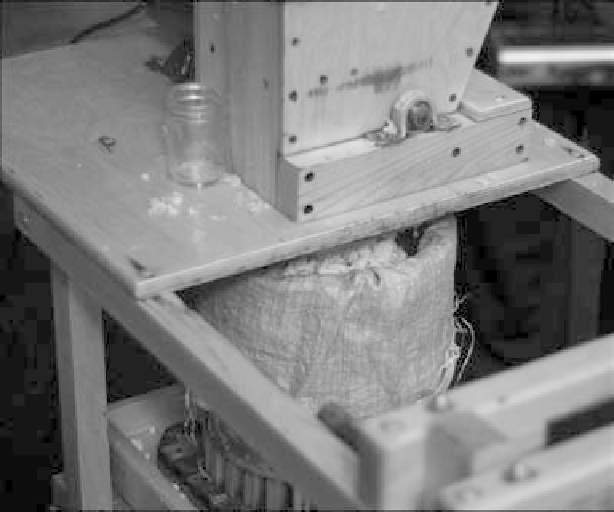Agriculture Reference
In-Depth Information
/
Kingston Black—One of the best cider apples, great bitter-sharp flavor.
/
McIntosh—Tart and tender.
/
Royal Russet—Sweet yellow flesh with hardy flavor.
/
Sweet Coppin—Sweet and bland, a good mixing juice.
Look for a good mix of sweetness and acidity when you mix your ciders. If you use only sweet
apples, your cider will be bland. If the cider is too sharp, it may be too strong when the cider is
fermented.
After you've selected and gathered your apples, the fun (some people call it work) begins. Wash
your apples thoroughly in clean water and then add them to the grinder whole, core and every-
thing. The grinder will crush the apples into a sort of mush called
pomace
. The pomace should be
pressed immediately after grinding.
After the apples run through the grinder, the pomace will drop into the bucket. Note the lining in the
bucket, which allows you to switch it straight into the presser.
(Photo courtesy of Ben Garney)
Move the bucket with the pomace to the cider press. Usually this is a screw press or ratchet press in
simple home setups. Close the press bag over the pomace and slowly press the pomace in the cider
press. Continue tightening the press down as the juice flows so you can squeeze out all the juice.
Use a nonreactive bucket to capture the juice. Stainless-steel, plastic, or enamel-coated containers
are good choices.














